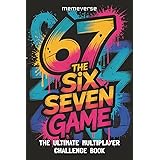Are you still dusting off your PlayStation Vita, searching for those hidden gems and classic experiences that make the handheld truly special? As highlighted in the accompanying video, the PS Vita continues to be a cherished device for enthusiasts who appreciate its unique library and distinct approach to portable gaming. While some might consider its active life span to be in the past, a vibrant community ensures that new discoveries and revisited favorites are consistently celebrated, even in January 2023.
This deep dive explores some of the compelling PlayStation Vita games that capture the essence of what made the system a cult classic, expanding upon the insights shared in the video. From quirky exclusives to strategic shooters and epic hack-and-slash sagas, the Vita’s diverse catalog offers something for every seasoned gamer.
1. Rolling with Touch My Katamari: A Decade of Exclusivity
First on the list is Touch My Katamari, a title that holds a special place in the PS Vita’s early history and, remarkably, has maintained its status as a platform exclusive for over a decade. For those unfamiliar with the whimsical premise of the Katamari series, players are tasked with rolling a sticky ball, known as a Katamari, to collect an ever-increasing array of objects. Initially, only small items like paperclips and pennies are gathered, but as the Katamari grows, it becomes possible for it to pick up everything from furniture and cars to entire buildings and even geographical features.
The Quirky Charm and Core Mechanics
The storyline, as playfully acknowledged in the video, is intentionally eccentric and often takes a backseat to the pure joy of the gameplay. In Touch My Katamari, a distraught King of All Cosmos, suffering from a crisis of confidence, must be cheered up by the Prince and his cousins, who roll up junk on Earth. While the narrative is lighthearted, the physics engine at play is surprisingly robust. Momentum, object placement, and the shape of the Katamari are all considered, leading to a gameplay experience that is far from mindless. It is often observed that the game’s addictiveness stems from this satisfying feedback loop of constant growth and acquisition.
A key aspect that often invites discussion is the implementation of touch controls. The game was designed to showcase the Vita’s unique capabilities, requiring players to use the front and rear touchpads to manipulate the Katamari. While this innovative control scheme was considered cutting-edge at the time, it is sometimes met with mixed reactions, as more traditional analog stick controls are often preferred by gamers who find touch-based movement to be less precise or occasionally “gimmicky.” Imagine if, for instance, a crucial maneuver required simultaneous precision on both front and back touch panels, potentially leading to frustrating moments amidst the otherwise enjoyable chaos.
Despite these minor control eccentricities, the game’s enduring exclusivity on the PlayStation Vita makes it a must-play for collectors and enthusiasts. It stands as a testament to the handheld’s early promise and remains a unique offering that cannot be experienced elsewhere, legally speaking.
2. Unleashing Bullet Hell in Resogun: A Thinking Person’s Shmup
Second, attention is drawn to Resogun, a title developed by Housemarque, the acclaimed studio behind other notable twin-stick shooters like Super Stardust and Dead Nation. Often considered a slightly unsung hero among the Vita’s action titles, Resogun redefines the horizontal scrolling shooter, or “shmup,” genre with its distinctive design principles and challenging mechanics.
Innovative Design and Strategic Play
What immediately sets Resogun apart from conventional shmups is its innovative cylindrical level design. Instead of navigating a flat, two-dimensional plane, players are presented with a continuous, wrap-around environment. This allows for enemies and threats to be seen approaching from “around the corner,” adding a layer of spatial awareness and strategic anticipation that is not typically found in the genre. It is, for example, possible to plan defensive maneuvers or offensive barrages well in advance, based on what is glimpsed on the horizon of the cylindrical arena.
A deliberate design choice made by the developers was to restrict player gunfire to horizontal directions only. This might initially seem limiting, but it forces a more tactical approach. Players are compelled to position their ships carefully, managing enemy formations and prioritizing targets, rather than relying on indiscriminate vertical spraying. This restriction elevates Resogun from a purely reflex-based shooter to what has been described as a “thinking man’s shmup.” Success is often found through intelligent movement, efficient power-up utilization (including bombs and boosts), and a keen understanding of enemy attack patterns.
While a deep, character-driven storyline is not the focus—as is often the case with shmups—a meta-narrative involving the rescue of scattered humans provides a compelling objective beyond mere survival. The game’s bosses are known for their varied difficulty, with some being highly intricate and others more straightforward, suggesting a greater emphasis may have been placed on the complex stage layouts themselves. Coupled with a pulsating, high-energy soundtrack, Resogun is widely regarded as a visually stunning and sonically engaging experience, particularly when played on the vibrant screen of the PS Vita.
3. Massive Battles in Samurai Warriors 4-II: Hack-and-Slash Supremacy
Thirdly, a journey is embarked upon into the feudal landscapes of Japan with Samurai Warriors 4-II, a title that firmly adheres to the beloved hack-and-slash and beat-’em-up traditions. As part of the long-running Dynasty Warriors and Samurai Warriors franchises, this game exemplifies the exhilarating chaos of a lone warrior facing down thousands of adversaries.
Unending Armies and Character Rosters
While Samurai Warriors 4-II is an iteration of Samurai Warriors 4, it functions as a standalone experience, offering a refined and focused take on the series’ established formula. A significant draw is its expansive roster of playable characters, numbering easily over 30, as noted in the video. Each character is provided with their own individual storyline, often spanning multiple missions where players typically control three to five characters within that narrative arc. The ability to choose battle companions adds a layer of strategic depth, allowing for varied team compositions and synergistic attacks.
The core gameplay loop is undeniably simple yet incredibly satisfying: players are cast as a powerful warrior capable of mowing down hordes of “mooks”—the numerous, often undifferentiated enemy soldiers that serve as cannon fodder. Levelling up characters unlocks new abilities and enhances existing ones, allowing for even more spectacular displays of martial prowess. This “wash, rinse, and repeat” cycle, while seemingly basic, provides a profound sense of progression and power fantasy that is central to the franchise’s appeal.
Morale Systems and Collector’s Pursuits
A notable mechanic introduced or emphasized in this installment is the morale system. Specific territories on the battlefield are influenced by morale flags, and if enemy morale is high, opposing forces exhibit significantly increased attack and defense. It becomes incumbent upon the player to identify and defeat the samurai leaders waving these flags to lower morale, thereby weakening enemy resistance and making their defeat easier. This element introduces a tactical consideration beyond pure brute force, requiring players to prioritize targets and manage battlefield flow. Imagine, for example, pushing deeply into enemy territory only to be swarmed by seemingly invincible foes until the morale-boosting officer is strategically eliminated.
For the dedicated collector, it should be mentioned that an Asian English release of Samurai Warriors 4-II exists for the PS Vita. However, it is widely known that this particular version commands a substantial premium in the collector’s market, often fetching prices that are considerably higher than the game’s intrinsic value based purely on gameplay. While the game itself is undeniably fun and provides hours of entertainment, the cost of this specific collector’s item can be prohibitive, making it a pursuit primarily for the most ardent fans and completionists of PlayStation Vita titles.
The PlayStation Vita’s library, as exemplified by these titles, continues to be explored and enjoyed by a dedicated fanbase. Whether it is the imaginative world-building of Touch My Katamari, the strategic demands of Resogun, or the sheer scale of combat in Samurai Warriors 4-II, there are plenty of PlayStation Vita games that continue to offer engaging experiences well into the new year.









